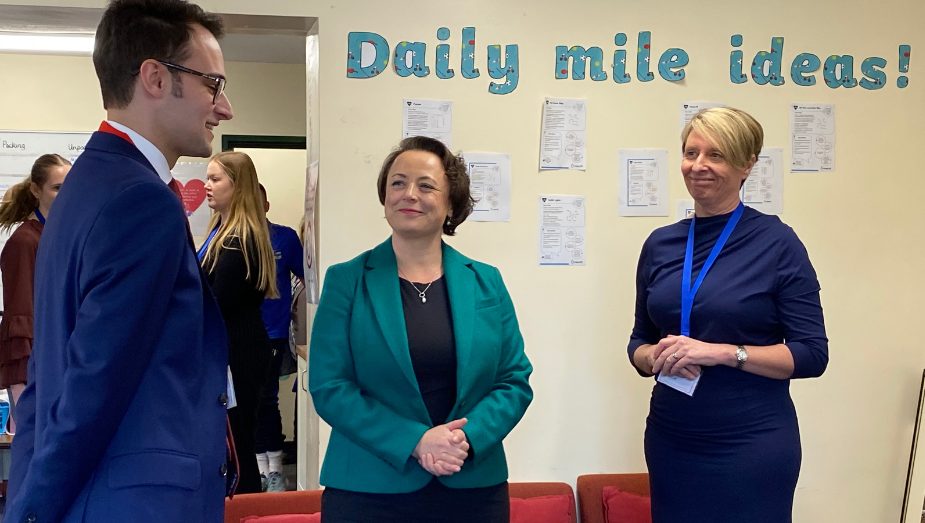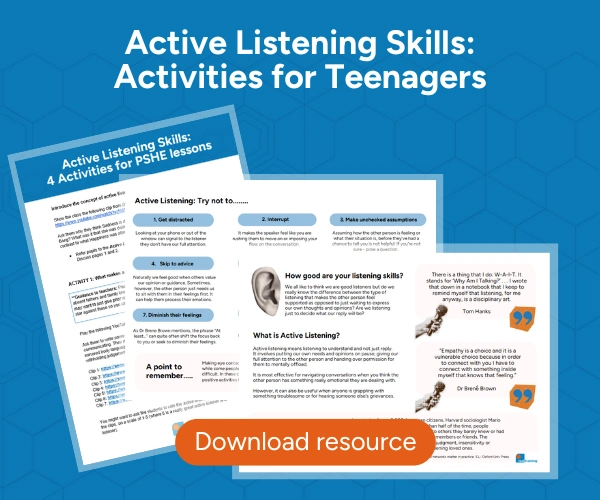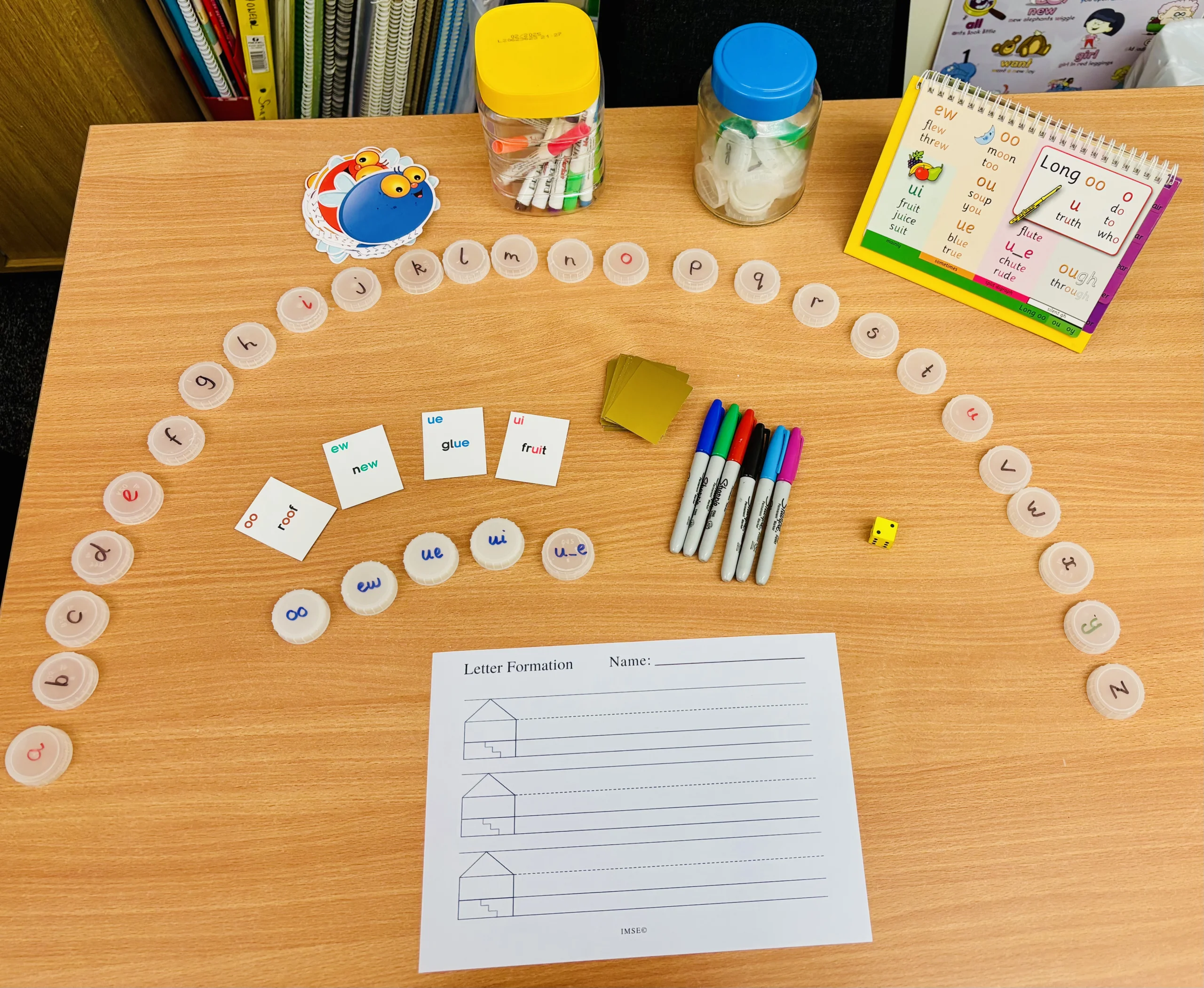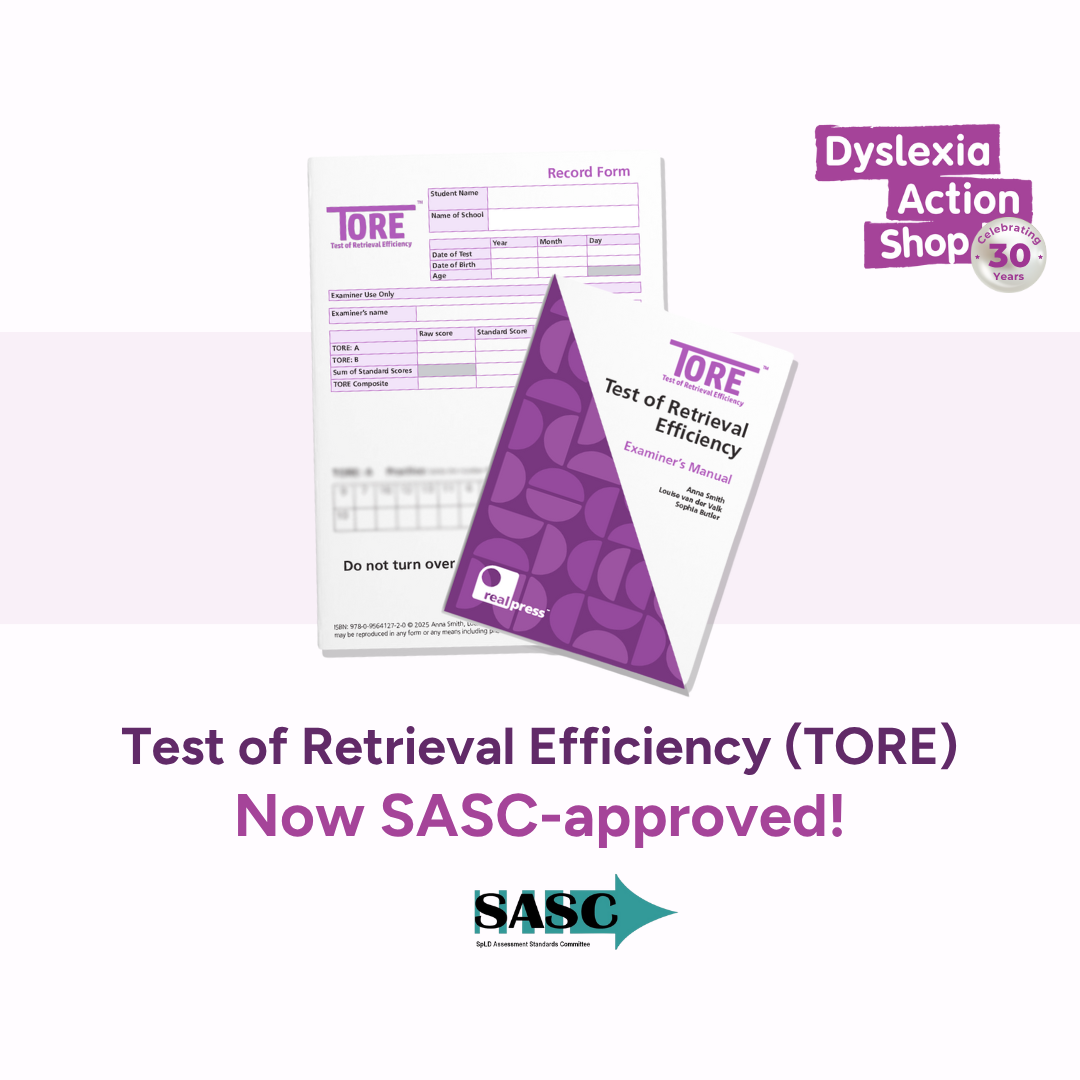Vik Virbauskaite |
February 4, 2025
We all like to think of ourselves as good listeners. Especially those of us who work in education. But the ability to listen actively is a distinct skill that’s not as intuitive as it first appears.
When we hear about a problem or challenging situation being articulated by a colleague or young person, our instinctive response is to try to analyse that problem and help them fix it. But in some contexts, this natural desire to problem solve and to make the person feel better as soon as possible, needs to be put on ice.
We have to slow down and just be in the moment with the young person, absorbing and sitting with their emotions, rather than seeking to distract from them.
Suppressing the desire to broadcast
To paraphrase Stephen Covey, active listening is the difference between “listening to understand” and “listening to reply”. A difficult skill for any adult to master perhaps, but potentially even more so for children. This is the first generation to grow up inside a highly addictive digital world – where people are in constant ‘broadcast mode.’ Just think of the content creators and TikTok gurus with a constant flow of 30-second soundbites of advice, opinion and quick-fixes.
And yet active listening skills are essential for all of us (teachers, parents, students, employees, managers) to become more empathetic and more productive – so where should we start?
Active listening: 7 principles
Practising good active listening involves suppressing our ego and shifting the locus of communication to the other person – giving them permission to offload (usually on an emotive topic). In doing so we become aware and responsive towards their feelings – something psychologists refer to as “attunement.”
It can be helpful to break it down into the following principles:
- Paying attention – using non-verbal and verbal cues; such as turning your body and head, and maintaining good eye contact (exceptions being when the other person finds this threatening or culturally inappropriate).
- Encouraging – nodding, smiling (or frowning in empathy as appropriate) as well as short interjections.
- Eliciting – asking open-ended questions to draw more from the speaker. This can sometimes mean just waiting in silence, allowing the other person time to process their thoughts and emotions. ”What else?”
- Reflecting and Clarifying – making inferences and checking they are correct, helps to show the person that we care as well as helping us get on the same page. Mirroring some of their language can also help with attunement. “This situation is clearly leaving you drained, as you say – and it’s having an impact at home too – am I right?” Or “Help me understand…is it that…?” “It seems the crux of the issue is….”
- Validating – acknowledging the gravity of the situation and accepting the person’s emotional response. “It sounds like this past week has been very hard for you – that must be really tough” or “I’m so glad you spoke to me because this is really important.”
- Summarising – using all that we’ve learned from the speaker so far to paraphrase what they have said. “So you’re really missing Adam since he moved to France, he was your best friend and a good listener and it’s taken you longer than you thought to realise how important he was and now you feel really sad that he’s not around to talk to after school.”
- Guiding – giving advice (if there is any to be given) should always come at the end of the process and if possible be focused on inspiring the other person to investigate solutions. ”Some people find it helpful to try X or Y.” If it’s a work problem a colleague is raising you don’t always have to agree with them but you do need to convey to them that you’re taking what they’ve said on board.
Some things to avoid
Sometimes it’s also useful to understand what can derail active listening.
- Assuming you know what it feels like; before really giving the other person the opportunity to tell you. If a colleague is having anxiety adjusting to a step up, cutting straight in with “I remember when I joined the senior leadership team – it was a big leap but I just kept ploughing on and eventually things settled down” fails to acknowledge the immediacy of their feelings and can emphasise the distance between you.
- Interrupting; although sometimes useful, it takes a very skilled listener to know when and how to do this. Better to sit tight and wait.
- Shifting the emphasis back onto you; can be damaging even with the best of intentions. Take a family break-up, for example. An adult responding; “My Dad walked out on me too, when I was younger than you”, often means the young person will hear; “This happened to me. In fact it was worse for me, but I dealt with it and so should you.” In other scenarios our own feelings of insecurity creep out “at least you know what the problem is with your project – I don’t even know how to get started….” or “you’re going to do great – it took me years to learn how to get through OFSTED without being nervous.”
- Being fearful of silence; one of the most surprisingly difficult parts of active listening but some of the best introspection can come from letting it linger. It’s difficult to judge the best cadence admittedly.
Encouraging active listening skills in children
Like many social skills, active listening can be understood on different levels. While primary school PSHE lessons may focus more on basic behaviour, making eye contact, thinking about what has been said before you respond, not getting distracted etc. it’s only once children become older that they can more fully grasp the seven principles mentioned above.
There are two important points to consider before attempting to teach or develop these skills in others. Firstly, it’s really important that young people are able to understand the full value and purpose behind active listening and so want to engage with it. Secondly, we need to check-in with the other adults around them – are we modelling it often – and correctly?
There are many contexts in which learners can start to practice their skills, before they dive headfirst into more emotionally heavyweight conversations; in English and PSHE lessons and in smaller groups such as on student councils and during form time, for example. Active listening skills can also form an essential part of restorative justice systems where both parties listen to one another’s grievances. In all instances, pupils should be recognised and praised when they make an effort and/or do it well.
[We’ve pulled together a few ideas for active listening activities aimed at teenagers that you can download here.]
Helping children in distress
If a child is finding something difficult then teachers may well find themselves at the first point of call and sometimes can help right away. However, when a young person is in distress the situation changes. There may be safeguarding concerns, you may need to refer to your designated safeguarding lead or SMHL.
The role of ELSAs
One great way that schools can provide small group or one-to-one support to help children experiencing anxiety, bereavement, anger or other social/emotional needs is by using ELSAs (Emotional Literacy Support Assistants).
ELSAs, often teaching assistants, receive training in active listening (and basic counselling techniques) from educational psychologists and participate in regular supervision. It allows them to form personal connections with children they are working with who often need more time and space to process their emotions. Schools that have started ELSA programmes frequently report many positive benefits including improved attendance, positive feedback from teachers and parents and of course significant improvement in self-reported well-being from pupils themselves.
You can now train to be an ELSA as part of the recently launched Level 5 Specialist Teaching Assistant apprenticeship which is fully funded through the Government’s apprenticeship levy.
Sound draining? You’re probably doing it right.
Anyone can get started with active listening but it may not feel natural at first. Counsellors and EPs spend years honing their skills to be able to practice at a more nuanced level with more complex conversations.
Observe others who do this well in your school. It might be someone on your senior leadership team, a fellow teacher or a dinner lady. Some older children are surprisingly good at it. If you line manage others or interact with parents of vulnerable children, think about these interactions too.
The effort we put in pays dividends. Some level of active listening (however basic) is a valuable skill for us all. It can help us to function better in our family unit, as part of a more inclusive school, and in a more productive workplace.
Find out more: Courses
Explore the Level 5 Specialist Teaching Assistant apprenticeship with ELSA qualification
Find out how to become a better coach or mentor in a school environment in our Coaching and Mentoring in Education course.
Further active listening resources
Active Listening for Teens: Take a look at our ideas for PSHE activities here
Harvard Business Review: A great video about active listening in a line-management context: www.youtube.com/watch?v=aDMtx5ivKK0
Brené Brown on Empathy: A powerful video that neatly explains the difference between listening with empathy and listening with sympathy: youtube.com/watch?v=1Evwgu369Jw&vl=en-GB
Education Support: Jacob Morgan, author and Founder of Founder of FutureOfWorkUniversity.com introduces the BUILD acronym: jacobm.medium.com/5-ways-to-practice-active-listening-924b58746494







What do you think?